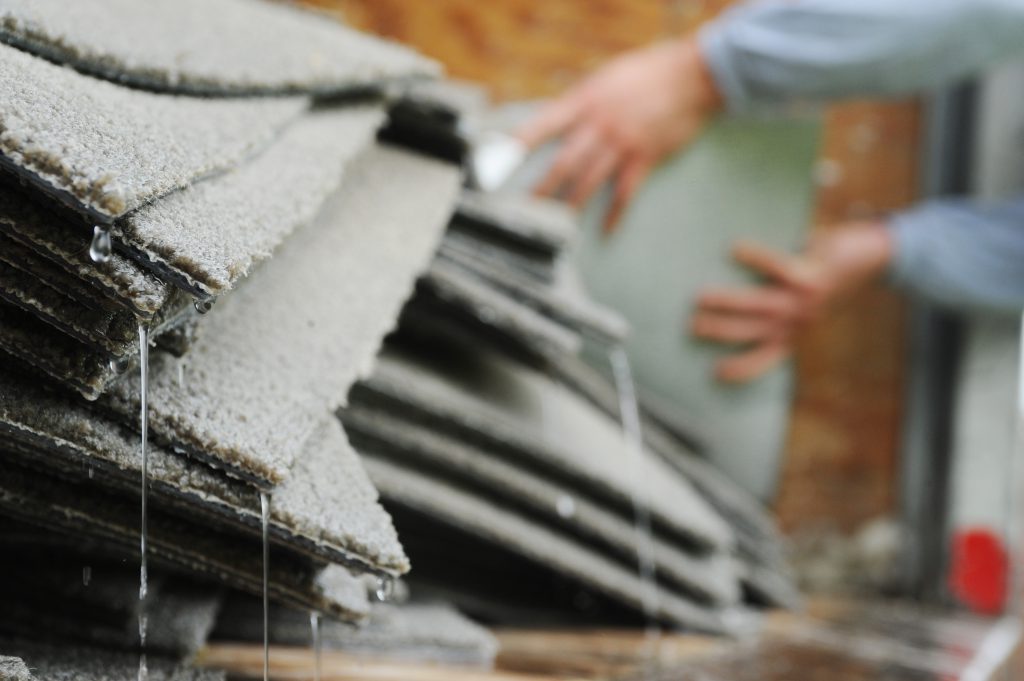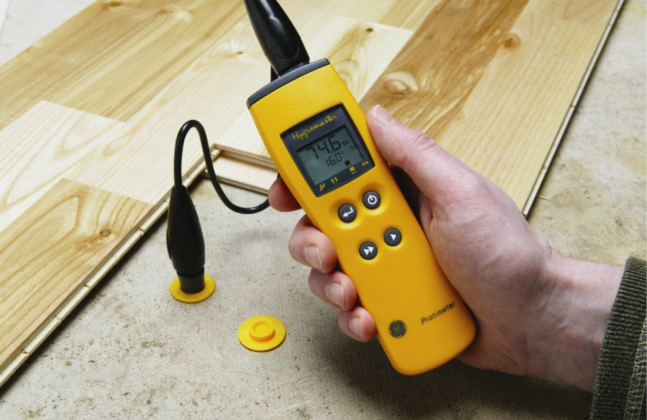In light of the long list of damaging storms and hurricanes that many regions in the world have suffered from recently, we’re reminded of the phenomenal damage flooding can cause and the affect this has on businesses, homes and communities who are left with the enormous challenge of replacing and repairing damaged environments.
Being flooded is an appalling experience that has long-term and costly consequences for everyone concerned. Hurricane Harvey alone has resulted in damages estimated to run into several billion dollars and rising.

Many areas have been badly affected by floods recently, from Texas to Puerto Rico and from Ireland to the Caribbean.
With this in mind, we’re specifically exploring the damage to different floor types caused by flooding. Although often overlooked, the floor is the most crucial area for any business – it’s the platform where customers browse, barter and buy and the solid footing on top of which machines whirr, products are made and employees operate, it is also one of the most likely areas to suffer damage after a flood.
Floodwater will wash over, corrode, stagnate and potentially ruin the floor finish, even after a short period of exposure. When water comes up through the sewer system, it brings all the bacteria and sanitary issues associated with sewer waste. Floodwater also comes from waterways such as creeks, rivers and bayous, carrying silt and mud from the run off and causing sanitation issues once the water recedes.
Therefore, it’s important to plan and prepare as much as you can in advance and more importantly know how to deal with the consequences once it has happened. To help you prepare and recover from flooding, we’ve looked at some of the most common flooring related issues.
Should you discard your flood-damaged floor?
As a general rule of thumb, if floodwater touches anything it should be removed as soon as possible and disposed of. Some hard surfaces are an exception as they can be disinfected as long as the treatment takes place within one week of the damage.
Care however, needs to be taken with metal furniture that’s made with tubular pieces, as water can be held inside giving bacteria and mould a place to grow, and may cause structural issues in the future if metal pieces rust.
Carpet, vinyl and tiled flooring will be seriously damaged and should be removed, disposed of and replaced. Carpet in particular holds large amounts of water and gives bacteria a place to breed. Once the floor is opened back to the concrete slab, this surface will need to be cleaned, disinfected and treated to ensure moisture is minimised and bacteria is killed before installing any new polymer flooring material.

When is it safe to start repair work on a floor?
Once a floor has been thoroughly cleaned and disinfected, fans and de-humidifiers should be placed in the area to help dry the floor slab. Complete drying will usually take 3-5 days and is a good time to consider replacement-flooring options.
The time for installing the floor will be dependent on the type of material being applied. For example, if carpeting is being replaced, small levels of moisture can be allowed to continue to dry over time since this is a porous covering.
Hardwood floors on the other hand need to be tested to determine the level of moisture in the slab. The adhesive is generally a water-based material and won’t set properly if moisture levels are high. This same issue will occur with vinyl tile or linoleum flooring.
No matter what the flooring material is, make sure to use a manufacturer’s recommendations for the acceptable moisture level before beginning any new floor installation projects.
For example, polymer flooring can be installed once the floor has been tested for moisture. Different types of polymer flooring have different sensitivities to moisture, which means that the moisture level needs to be within the tolerance level of the system in question. Water borne epoxies have some breathability, while high solids epoxy systems create a barrier so the moisture must be controlled to a higher standard. Cementitious urethane systems breathe similarly to the concrete slab, so the moisture can be higher when these floors are installed.

There are several ways to test the moisture level in a concrete slab, the humidity sleeve shown here is one.
A professional flooring contractor should be brought in to test the slab and install the new floor. They will also provide the proper equipment to determine the onsite moisture levels and will be able to advise on the optimum time for the floor’s installation (If you’d like to learn a bit more about how to test for moisture in a concrete substrate read these two previous blog posts on humidity sleeve and humidity box).
What are the benefits of installing a hard wearing, water resistant and long lasting floor coating system to replace flood-damaged hardwood, tile, laminate and carpet flooring?
Some flood-resilient measures may initially cost a little more but in the long term, save you from costly damages after flooding occurs. It’s a good idea to replace timber floors with a seamless polymer floor coating such as epoxy, polyurethane or a cementitious urethane system as when properly installed they bond well to the slab resulting in a smooth, non-porous and easily cleaned surface that creates a barrier to water, dirt and debris.
In the event of future flooding the floors can then be easily disinfected to minimise the chance of mould or bacterial growth. Furthermore, the majority of these systems have been tested for resistance against these disinfectants so no future damage will occur from the process. These robust, easy to clean properties are particularly advantageous in industrial facilities that need to return to operation as quickly and as hygienically as possible.
If you’d like to learn more, please leave a comment at the bottom and we’ll put you in touch with a nearby flooring expert who will be happy to discuss your ideas and share their expertise, advice and system recommendations for industrial and commercial sectors.
5 thoughts on “Getting Flood Damaged Floors Back on Their Feet”
Comments are closed.






I’m glad that you explained how seamless floor coatings such as epoxy can help resist water damage better. The current flooding tragedies are really alarming, and I think it’s time for everyone to start considering their options to minimize the potential water damages that the weather conditions can dish out. We live in a typhoon-prone area, so I’ll be sure to start looking around for epoxy coating services that can help mitigate water damage should any serious flooding strike.
Thanks for mentioning that you should place fans and dehumidifiers after you have cleaned and disinfected the floors. We would do that, but we don’t have any industrial-grade fans or humidifiers. Maybe we should look into hiring a professional to help us out because they would have the right tools to do everything right. We should probably get one soon as well so we don’t sustain any more damage to our floors.
You got me when you said that being flooded will require you to deal with long-term and costly consequences that you should be concerned of. I bought a new house which I’d like to be protected at all times. Well, I don’t want to end up having a damaged property that I might not be able to restore. Since I don’t know when flooding will occur, I will make sure to shop for a flood insurance policy.
I’d like to learn more, to be put in touch with a nearby flooring expert who will discuss my ideas and concerns regarding epoxy basement floors in a flood zone. Hoping they will share their expertise, advice and system recommendations.
Thanks
Hi Danielle
Thanks for your message. If you could let us know where you’re based by emailing marketing@flowcrete.com, we’ll put you in touch with your closest flooring expert.
Kind regards,
Dan